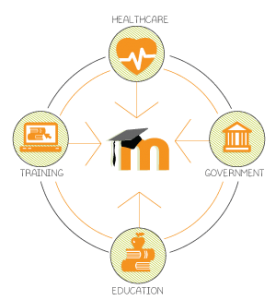If your company operates in an environment of constant change, how can your training program possibly keep your workers up to date all the time?
It can’t. Training programs are definitely valuable to making the most of human capital. They’re also—no shocker here—costly to maintain, and limited in their agility when it comes to keeping pace with changes in technology, industry trends, and business climate.
That’s why engraining continuous learning into your corporate culture is so critical. Training programs cannot be the be-all and end-all of professional development for your staff. But as we’ve already seen, giving staff members room to self-direct their own learning suits them just fine.
You can make the most of continuous learning by openly encouraging it, providing the tools to pursue it, and making the process both meaningful and rewarding.
Here’s how:
1. Set measurable learning goals. Targets should be chosen that are win–win for the company and individual staff members. Shared goals help engender a sense of organizational togetherness—both between team members, and between individual workers and the organization as a whole. An example goal might be for all staff to reach intermediate familiarity with new document-management software.
2. Reward milestone completion. Milestones make learning less daunting, and giving rewards helps make participation and follow-through more attractive for learners. Who doesn’t like reaching a goal and getting a prize for it? Rewards can include badges--virtual certificate or badge that the learner can upload to their learning plan or their LinkedIn. Other traditional reward like gifts, money, or even something as simple as a lunch out can also help.
3. Make learning accessible. Part of accessibility is to make the information and tools needed to learn available: coaching or mentorship programs; learning-aids, guides and manuals; enterprise social networks such as Yammer, Jive, and LinkedIn groups; or the wikis and blogs accessible through a learning management system like Totara's social learning feature.
The other side of making learning accessible is to offer encouragement along the way. Managers can be enlisted as continuous-learning ambassadors, and should let staff know that there is room for both experimentation and making mistakes. Failure is, after all, one of the very best learning methods.
4. Assess progress. The only way to know if milestones or goals have been reached is through skills assessment. This is particularly easy to do with a learning management system. Regular assessment can also help learners know where their skills fall short—and help them determine where they might want to spend a bit more time learning and practicing.
5. Keep it meaningful. It’s worth re-emphasizing that continuous learning must be meaningful to learners, and offer win–win benefits to both your organization and individuals. This is the only way to embed it in the culture, and offer consistent value. Give encouragement, leave room for learners to learn in the way that works for them, and communicate why what their doing so benefits everybody.
We'd be happy to demonstrate any one of the above suggestions through a personalized demo.




